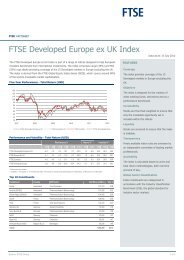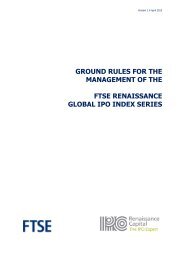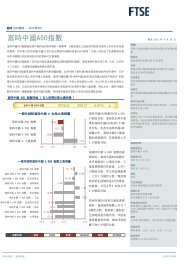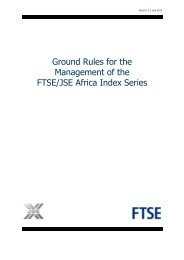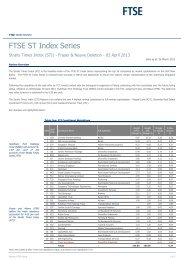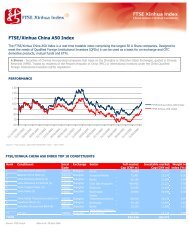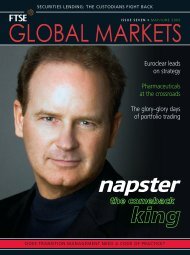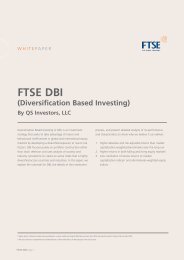You also want an ePaper? Increase the reach of your titles
YUMPU automatically turns print PDFs into web optimized ePapers that Google loves.
OLD WINE IN NEW<br />
WORLD GLASSES<br />
In the United States, covered bonds were a long<br />
time coming. The crème de la crème of private<br />
sector bank credit in Old Europe since the days<br />
of Frederick the Great did not reach the New<br />
World until September 2006, when Washington<br />
Mutual (WaMu) launched the first covered<br />
bond programme for a US issuer. In the wake of<br />
the credit crisis, however, American regulators<br />
are pushing hard to develop a domestic market<br />
for an instrument that has long provided an<br />
inexpensive funding source for large banks in<br />
Europe. Neil O’Hara reports on the outlook for<br />
an old asset class in the New World.<br />
INVESTORS ACCEPT A yield lower than for<br />
conventional unsecured bonds because covered bonds<br />
represent both a senior obligation of a major financial<br />
institution and a priority claim against a segregated pool of<br />
high quality assets if the issuer fails. Nevertheless, issuers<br />
and underwriters face a challenge in educating US<br />
investors who, although familiar with traditional bonds<br />
and securitised debt, have no experience of a hybrid that<br />
combines features of both.<br />
F T S E G L O B A L M A R K E T S • J A N U A R Y / F E B R U A R Y 2 0 0 9<br />
Although US regulators began to press for a local market<br />
in covered bonds only after the credit crisis took hold, they<br />
have made rapid progress, according to Florian Hillenbrand,<br />
a vice president and senior analyst at Unicredito in Munich.<br />
“The first time I heard US guys speak about covered bonds<br />
as something that might be of interest for domestic banks<br />
was in January,”he says,“Six months later they were saying<br />
on balance sheet funding is good for asset quality and you<br />
had co-ordinated statements from supervisory bodies. That<br />
is impressive.” In July, the Federal Deposit Insurance<br />
Corporation (FDIC) put out a Final Covered Bond Policy<br />
Statement and two weeks later the Treasury followed up<br />
with its Best Practices for Residential Covered Bonds.<br />
Even so, it will take more than regulatory support to develop<br />
a covered bond market in the US. Although Bank of America,<br />
Citi, JPMorgan Chase and Wells Fargo have all expressed<br />
interest in issuing covered bonds, investors are unlikely to<br />
want to jump on the bandwagon until they see good two-way<br />
flow. Dan Markaity, head of global public credit at Merrill<br />
Lynch in New York outlines some of the requirements. He<br />
thinks that covered bond issues need to be large—preferably<br />
$2bn or more, so that dealers will not be afraid to sell them<br />
short; a prerequisite for liquid secondary markets. Moreover,<br />
Markaity believes covered bonds should be available to small<br />
Photograph © Lazarx/Dreamstime.com,<br />
supplied<br />
November 2008.<br />
COVERED BONDS: THE US OUTLOOK<br />
71



